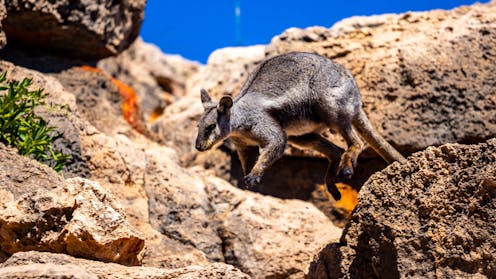As the federal government fumbles on nature law reform, the states are forging ahead
- Written by Phillipa C. McCormack, Future Making Fellow, Environment Institute, University of Adelaide

The South Australian parliament today passed a new law to conserve, restore and enhance biodiversity.
It brings together native vegetation management, protection for native species and habitat, and conservation on private land. When introducing the bill to the Parliament, Deputy Premier Susan Close said:
Just as South Australia has led the way on climate action, committing to net zero emissions by 2050, we must now take the same ambitious approach to biodiversity. (This) crucial piece of legislation … will modernise and strengthen protections for South Australia’s biodiversity to benefit us and our future generations.
SA is not the first state to revise its nature laws. But this is the first environment law in years to be drafted from scratch in Australia. Rather than waiting for federal reform, SA has leapfrogged the protracted process. This new legislation achieves some things no Australian law has done before.
National environment law reform has stalled
This all comes at a time when the federal law reform is up in the air.
The Albanese government failed to pass new national environment laws during its first term.
Environment protection even went backwards just before the election. The rushed amendments limited powers to reconsider certain environment approvals when an activity is harming the environment.
Last month, the new Federal Environment Minister Murray Watt said environmental law reform was a priority. Still, it may be difficult to get the essential ambitious national reforms over the line.
In the meantime, state and territory governments are forging ahead.
Time for states and territories to lead?
The last state to write a new nature law was New South Wales, in 2016. But a scathing 2023 review of the law recommended a major overhaul.
The NSW government committed to most of the recommendations, announcing big plans for nature law reforms in July last year. These plans include strengthening land-clearing codes, improving species protections and monitoring, and preparing a new “nature positive” strategy.
So far, the NSW government has only managed to pass legislation to fix problems with biodiversity offsets. Offset schemes allow developers to compensate for their destruction of vital habitat with gains elsewhere.
In Victoria, the Flora and Fauna Guarantee Act 1988 was amended in 2019. These reforms inserted new principles around how the Act should be implemented, and a new approach to crucial habitat. The reforms also emphasised the need to improve species’ survival and adaptation to climate and environmental change.
The Nature Conservation Act and strategy in the ACT are also due for review. Early consultation concluded in July 2024. A revised Act is likely to be released later this year.
Does Australia really need two layers of environment laws?
The short answer is yes, Australia needs both state and federal environment laws. But the interactions between the two could be managed better.
The Australian Constitution doesn’t give the federal government explicit authority to make laws about the environment. That’s left to the states and territories, which means they make most laws about threatened species, waterways, native vegetation and protected areas.
The federal government has an overarching responsibility to protect environments that are important to all of us, in national laws. We call these “matters of national environmental significance”.
Some matters are significant because they involve Australia’s promises to the rest of the world. Australia has international obligations to protect world heritage areas and internationally significant wetlands, for example.
Other matters cross state borders. The orange-bellied parrot, for instance, migrates across three states to find food and nesting sites.
Individual states and territories do not have sufficient resources or the national perspective needed to protect these species and places.
Why do the South Australian reforms matter?
SA’s new Biodiversity Act does some things no Australian law has done before.
For example, it looks beyond species and ecosystems, offering protection to so-called “ecological entities”. Regulations will be needed to define what an ecological entity is. But the concept may protect refuges where species shelter from extreme events. It might also offer a new way to protect important landscape features such as coastal dunes.
Another new concept is “culturally significant biodiversity entities”. The Act defines a culturally significant biodiversity entity as:
- a native species or ecological community
- with cultural value to some or all Aboriginal people
- which is critical to Aboriginal peoples’ relationships with and adaptation to Country.
The Act also sets up a new Aboriginal Biodiversity Committee. That committee will co-develop policies with the minister. One of these policies will explain how culturally significant biodiversity entities will be identified and managed.
Other policies will be developed in collaboration with the Aboriginal Biodiversity Committee. These include policies to guide cultural burning of native plants, or to consider and apply Aboriginal knowledge. At long last, Aboriginal people will have a “seat at the table”.
SA becomes the third state (after NSW and Victoria) to mention climate change in its nature law. This is an important reform. Laws are needed to help nature survive more frequent and severe droughts, floods and fires.
Environmental scientist and polar explorer Tim Jarvis on biodiversity (Department for Environment and Water)All hands on deck
Australian environments are extraordinary, diverse and ancient. But Australia has long been an extinction hotspot. The continent’s ecosystems remain under serious pressure.
Our environment laws must be clear and avoid complex clashes or gaps between national and state responsibilities. But SA, NSW, Victoria and soon the ACT show law reform can also be more ambitious. Nature laws can truly help the environment to flourish even as the climate changes.
Authors: Phillipa C. McCormack, Future Making Fellow, Environment Institute, University of Adelaide



















